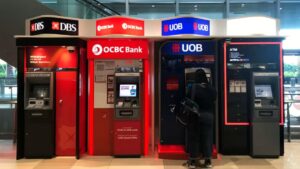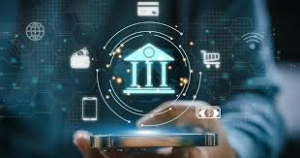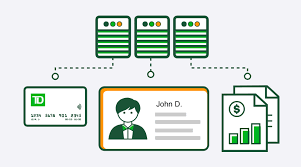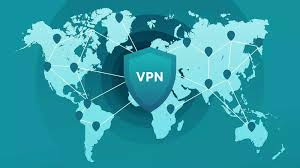In today’s digital age, online banking has revolutionised the way customers manage their finances, offering them immediate access to their accounts at any given moment. This level of convenience transforms not only routine banking tasks but also plays a crucial role in both long-term financial strategies and urgent situations that may arise unexpectedly. Most conventional banks have adapted to this trend by providing various forms of digital banking alongside their physical branches, while some institutions operate solely in the online realm.

The emergence of mobile banking applications and web-based portals has significantly enhanced users’ ability to monitor and control their financial matters from virtually anywhere. However, despite these advancements, a number of individuals remain apprehensive about the security aspects associated with online banking. It’s essential to understand how to safeguard your personal information when engaging in online transactions. For further insights, you can explore topics such as Best Online Banks and examine questions like Are Online Banks Safe and Secure?
One of the standout advantages of online banking is its unparalleled convenience. Many services that traditional banks offer—such as checking account balances, transferring money between accounts, depositing checks remotely, or settling bills—can now be accomplished through a computer or mobile device at any hour of the day and from any location imaginable. This capability effectively removes the necessity for physical visits to bank branches.

Interestingly, banks that operate exclusively online often provide more attractive interest rates and reduced fees compared to their brick-and-mortar counterparts. The reason behind this is straightforward: these digital-only institutions maintain a smaller operational footprint and incur lower overhead costs. Significantly, though, these benefits do not compromise safety; an online-only bank can still offer all the federal protections available to traditional establishments.
Before you decide to open an account with an internet-based bank, it’s prudent to confirm that it is insured by the FDIC (Federal Deposit Insurance Corporation), which safeguards individual deposits up to $250,000. Additionally, ensure that the bank’s website employs robust encryption methods for data protection when you access your account information; currently accepted standards include 128-bit encryption technology. Moreover, reputable banks will typically restrict access from browsers that do not meet their stringent security requirements.
In summary, while embracing the ease provided by online banking services comes with its own set of considerations regarding security measures—and rightly so—it opens up a world of possibilities for managing one’s finances efficiently and effectively.
When it comes to bank accounts that offer competitive interest rates, there are a few noteworthy options available. For instance, SoFi Checking and Savings provides an impressive annual percentage yield (APY) of 4.00%, with no minimum balance required to earn this rate. Similarly, both Barclays Tiered Savings and Laurel Road High Yield Savings also offer an attractive APY of 4.50%, again with no minimum balance necessary to benefit from these rates.

In addition to exploring high-yield savings accounts, it’s vital to prioritise online banking security. While banks implement robust security protocols to safeguard your information, you must also take measures to protect yourself against identity theft and cyberattacks. One fundamental step is the use of strong passwords; even if your bank enforces stringent password policies, ensure that any devices where you store banking information are secured with passwords. This precaution becomes crucial in the event that your phone or computer is lost or stolen, as it complicates access for potential thieves.
If remembering multiple complex passwords is a challenge, consider using a password manager app. This tool can securely store all your passwords in one place, so you only need to remember the master password for the manager itself.
Another essential security feature is multifactor authentication (MFA). Your bank should mandate MFA when accessing your account online; this means you’ll need more than just your username and password for entry. Additional verification steps may include answering security questions or entering a code sent directly to your mobile device. Furthermore, using a mobile banking app should require either a passcode or biometric identification, such as fingerprint recognitio,n for added protection.

By taking these proactive steps alongside choosing high-yield savings accounts, you can enhance both your financial growth and personal security in the digital banking landscape.
It’s crucial to keep your passwords confidential. Cybercriminals and identity thieves employ advanced tactics to trick you into disclosing sensitive information. They can design counterfeit websites that mimic your bank, send seemingly genuine emails, or make phone calls intended to intimidate you. Remember, your bank will never ask for personal or financial details via email or phone call. If you receive such a request, reach out directly to your bank using the contact information you already possess; do not respond to any suspicious emails or calls, even if they appear authentic.
Additionally, be cautious when using public Wi-Fi networks for banking activities. While your devices may be secure, accessing your financial accounts over an unsecured connection can put your data at risk. Although free public Wi-Fi at places like coffee shops is tempting, it can expose your personal information to potential hackers. It’s best to wait until you’re on a secure home network before logging into essential sites like your bank or email. If you must access banking services while away from home, consider using the bank’s mobile app while connected through your cellular network instead.
To further safeguard your online presence, consider using a virtual private network (VPN). While reliable VPN services typically require a monthly subscription fee, they are essential for securing internet connections when accessing banking information on unfamiliar networks.

Finally, take advantage of alert systems offered by most banks. You can set up notifications for unusual account activity through their online platforms or mobile applications. These alerts can be sent as text messages or emails and often cover significant withdrawals, account closures, new check orders, and even debit card transactions. By staying informed through these alerts and following best practices for online security, you can better protect yourself from potential threats in the digital landscape.
Navigating the world of online banking comes with its own set of challenges and risks, despite taking precautions to safeguard your information. Unfortunately, absolute security is an elusive goal. For instance, significant data breaches have occurred even among reputable banks and financial institutions; a notable example is Robinhood’s revelation in November 2021 that hackers had infiltrated their system, compromising the personal details of approximately 7 million users.
Moreover, another threat arises if a device you rely on for online banking goes missing or is stolen. Even with robust security measures like multifactor authentication and strong passwords in place, there’s still a possibility that someone could gain access to your email account. This could enable them to reset your password or circumvent your bank’s protective barriers altogether. In the unfortunate event that one of your devices is lost or stolen, it’s crucial to immediately contact your bank and request a temporary freeze on your accounts. This step will help prevent unauthorised access to your funds while you work to secure everything else.

Maxthon
In the ever-evolving realm of technology, the idea of personal freedom has become a crucial issue for many individuals. Not so long ago, a large portion of society felt at ease surrendering their privacy and security to significant service providers. They trusted these companies to protect their sensitive data and provide dependable services. Yet, over time, that once-solid trust has steadily diminished. The media has bombarded us with alarming stories about data breaches, demonstrating how even the most substantial corporations can succumb to cyber threats. Additionally, recurrent service outages have only intensified user dissatisfaction, leaving people feeling more isolated in an increasingly digital world.
In light of these unsettling developments, consumers have started seeking alternatives that grant them greater control over their information. This quest for autonomy has led to a significant rise in the popularity of private clouds—safe havens for those looking for a more tailored and secure computing experience. These innovative solutions empower individuals to manage their data on their terms, allowing them to steer clear of the dangers linked with larger platforms.

As this shift towards independence takes shape, it becomes evident that people are reclaiming ownership of their digital identities like never before. No longer passive participants in a system that often overlooks their needs, they are actively pursuing ways to safeguard what rightfully belongs to them—a powerful testament to an era where empowerment and self-determination are paramount in our interconnected lives.
In this new phase of technological interaction, users are not just adapting; they are seizing control. The increasing demand for privacy and security is driving innovation and creating an environment where individuals can thrive without sacrificing their principles or sense of self-worth.
